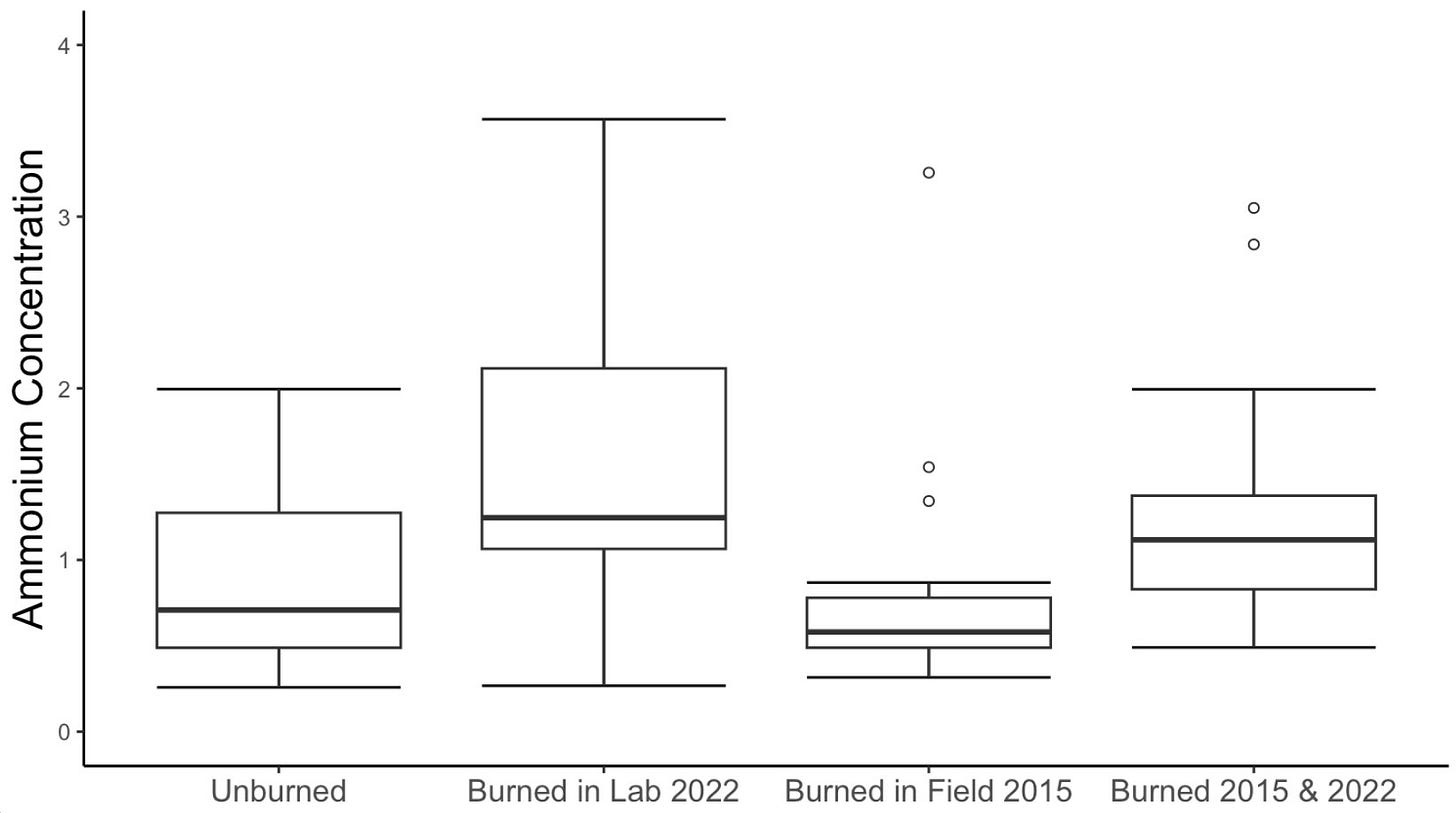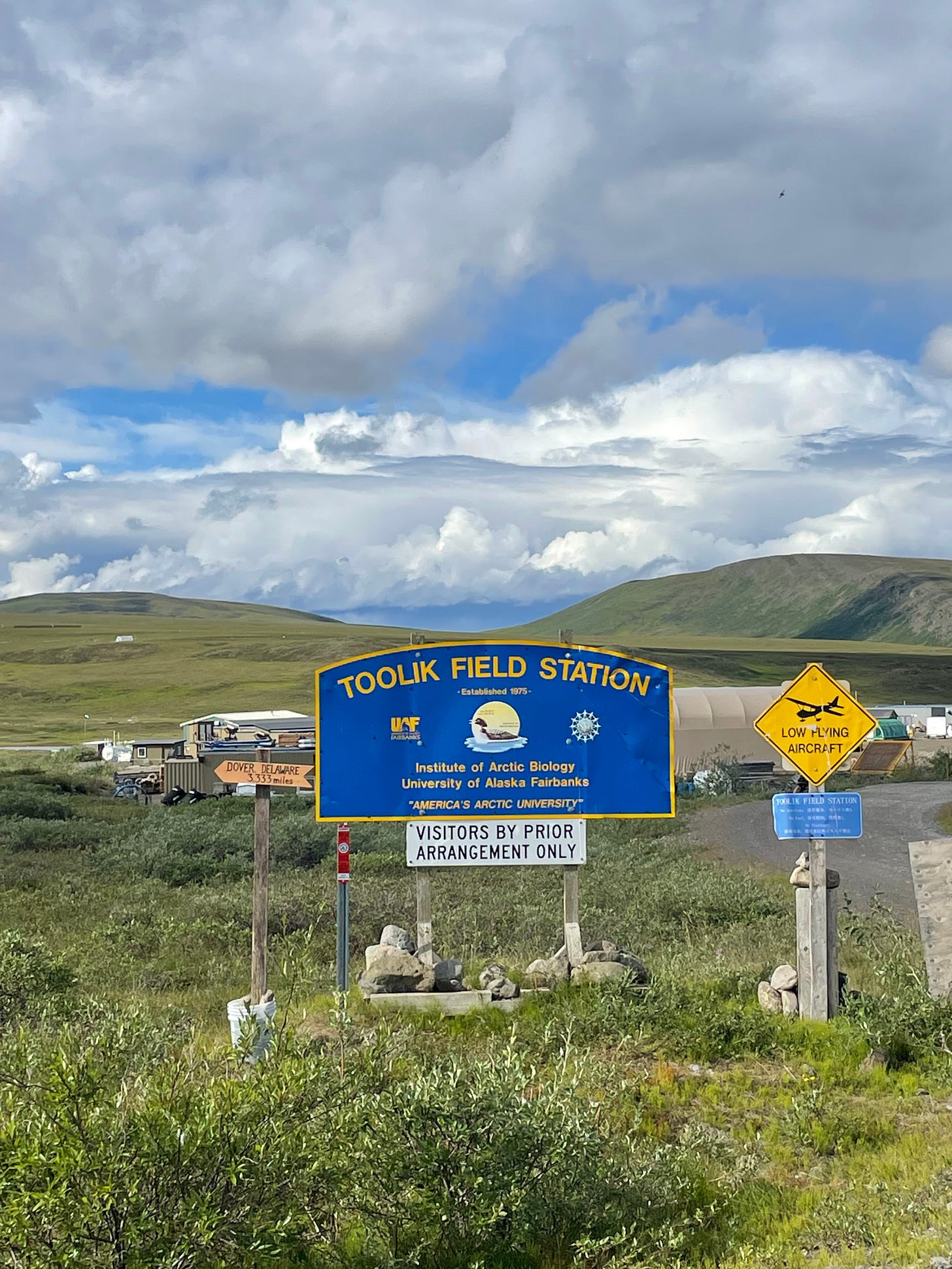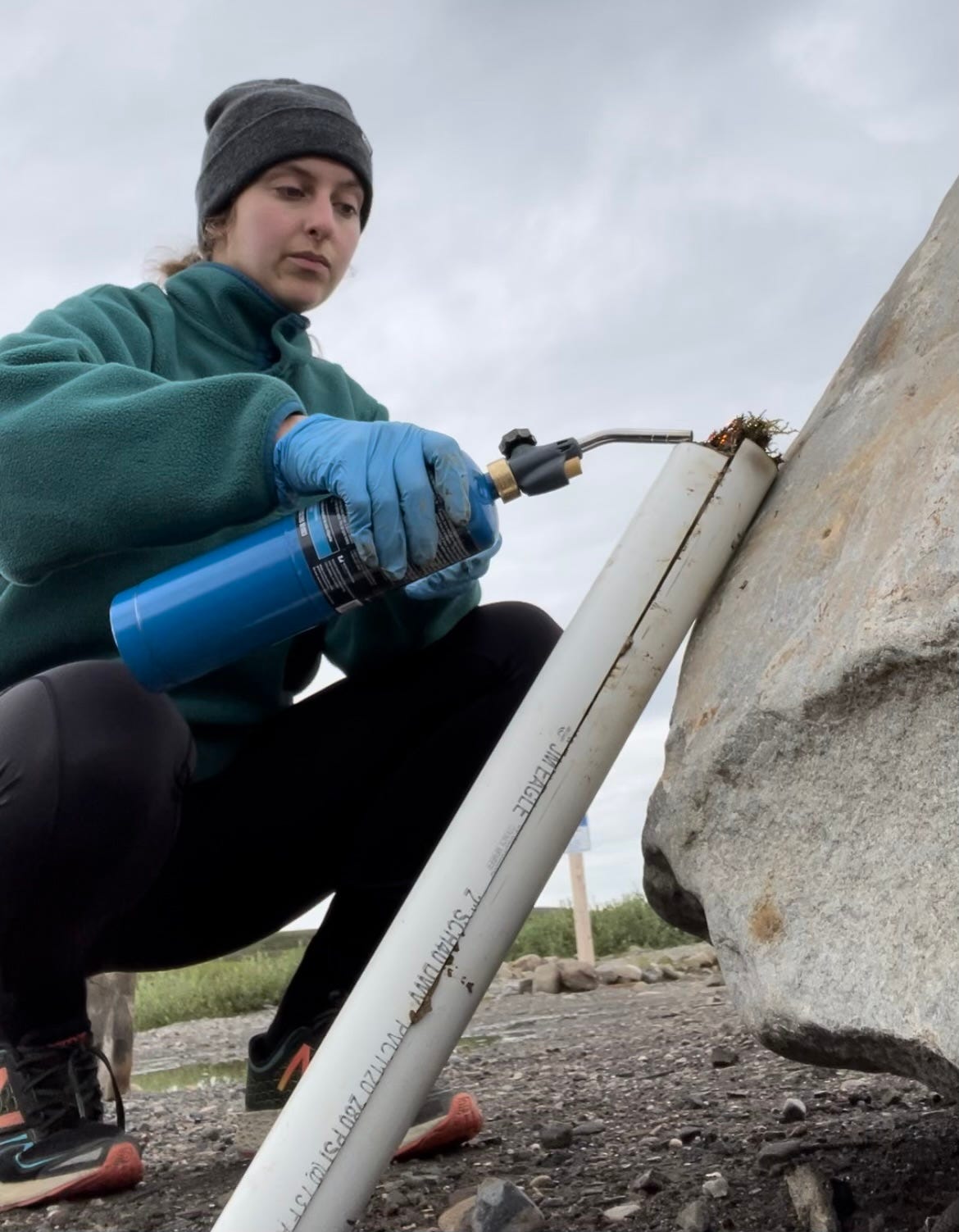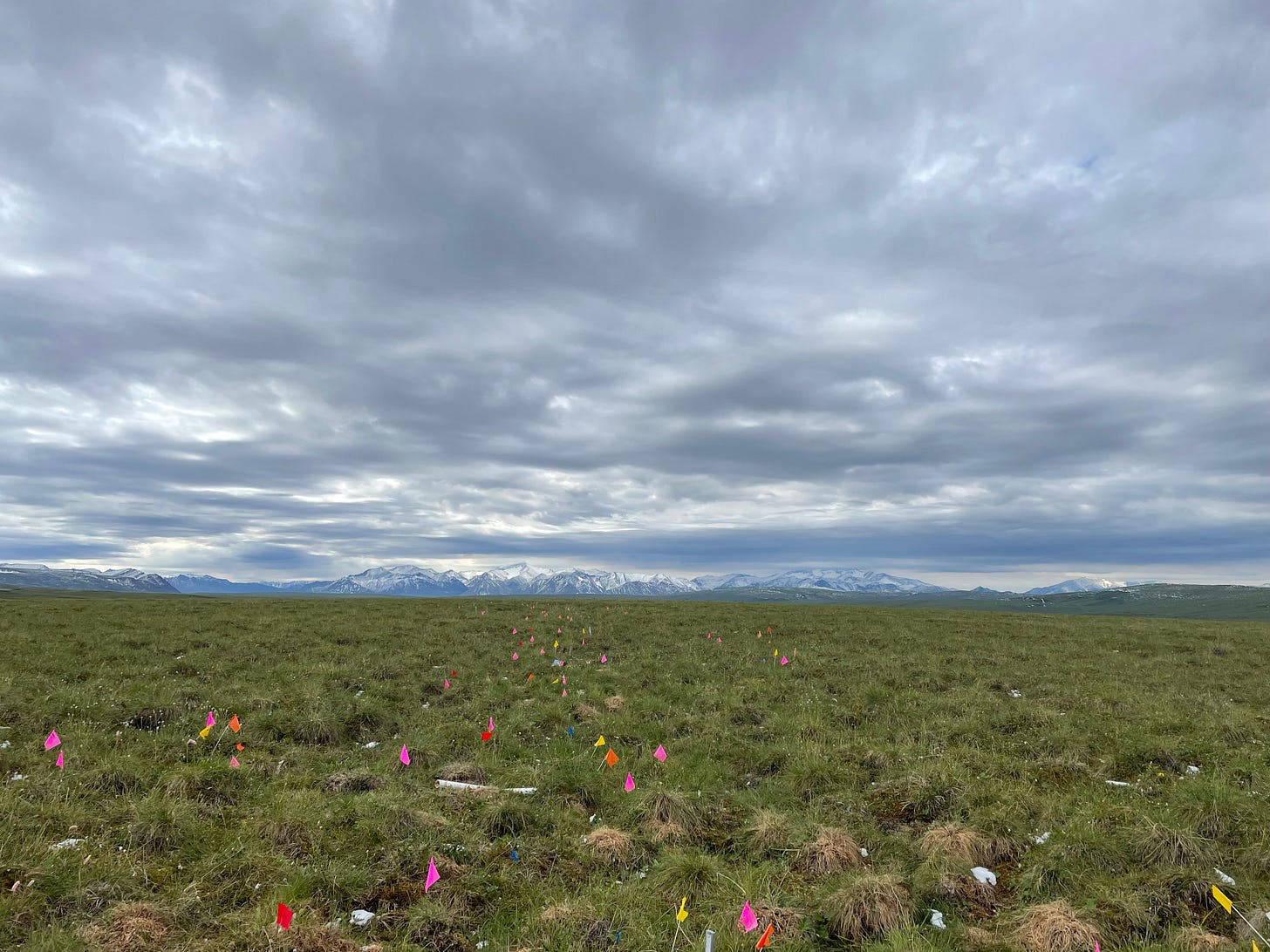my master’s research
This week, I graduated with my M.A. in Ecology, Evolution, and Conservation Biology.
I spent two very elucidating, difficult, and impactful years learning more than I ever thought I could about the Earth, climate change, soil, fire, and the Arctic tundra (and yes, myself, but that felt a little cheesy).
I completed a research project that I’m very proud of, and while I’ve also written a technical, scientific thesis, I wanted to provide a more casual, digestible overview of my research. If you actually want to read my manuscript, feel free to reach out!
My project started as a vague interest in wildfires, in the hopes of giving something back to my home state of California. I wasn’t sure what direction to take, but I wanted to learn more about how fire impacted ecosystem processes. I was also introduced to some incredible research that was happening in the Alaskan Arctic, and I began to wonder about the effect of tundra fires.
Fire is not a typical phenomenon in the Arctic tundra the way it is in the western continental United States. And while some areas in Alaska burn relatively frequently, the Arctic tundra is not one of them.
Climate change has altered the fire regime in the Arctic. As summers get hotter and drier, fires have become more common, and the probability that the same area will burn multiple times has increased.
When we think of fire, we usually consider the effect on vegetation and air quality, but wildfires also have significant consequences for soil nutrients. Nutrients, like nitrogen, are crucial for plant growth and productivity. If we think of carbon and oxygen as food for plants, nutrients like nitrogen and phosphorus are the vitamins. Without them, plants will die.
After a fire, nitrogen that is stored in plants is released into the ecosystem. Some nitrogen is combusted and lost as gas, but some is converted from an organic form to an inorganic form during a process called mineralization.
The inorganic forms of nitrogen, like ammonium (NH4+) and nitrate (NO3−) are readily available for plant uptake, but they are also susceptible to leaching. Therefore after a fire, we often see a spike of available inorganic nitrogen, followed by a loss from the system as NH4+ and NO3− are washed away.
This is the typical pattern after one fire, but does it hold for multiple fires? Will a frequently burned area demonstrate increasingly smaller pulses and losses of nitrogen with each subsequent fire?
To investigate this question, I traveled to Toolik Field Station, a research station in the Alaskan Arctic tundra.
On a personal note, it was amazing. The landscape was beautiful and it felt so rewarding to conduct field work in such an important ecosystem. It was also fun! Field research stations are a bit like science summer camp.
But back to the methodology. In order to determine the effect of repeat fire on soil nutrients, I compared NH4+and NO3− in soil cores with different fire histories. I sampled from previous research plots, half of which had been burned as part of an experiment in 2015, and half which had never been burned.
I then used a propane torch to burn half of my samples for a total of 4 treatments: unburned, burned in 2015, burned in 2022, and burned in both 2015 and 2022. This way I was able to simulate recent, past, and multiple fire events.
I won’t bore you with too many details, but I extracted NH4+ and NO3− from each sample using a potassium chloride solution, and I brought almost a hundred vials back to my university lab for analysis (in a tiny cooler in my checked luggage).
The field work was done, so I thought the hard part was over….but no.
I experienced so much angst over the next 6 months trying to get the laboratory equipment to work properly. I used a machine called a discrete analyzer to measure the concentration of NH4+ and NO3− in each sample, and it took many hours of frustrated fiddling, several calls with tech support, one crashed computer, and one minor chemical spill before it finally worked.
I may or may not have cried in the lab on multiple occasions. But I got results!
As you can see in these boxplots (lovingly and laboriously constructed in R), NH4+ increased by 104% between unburned samples and samples burned in 2022, and by 65% between samples burned in 2015 and those burned in both 2015 and 2022.

This confirms the pattern we had suspected: fire causes an initial spike in nitrogen, and appears to decrease with multiple fires.
Additionally, NO3− appeared to decrease after the 2015 burns, indicating a potential loss of nitrogen from the system in the years following the first fire. However, all the NO3− concentrations were very low, so I don’t want to draw too many conclusions.

What we can say is that repeat fires do release nitrogen from the ecosystem, and that nitrogen is susceptible to loss over time. The tundra is already a very nutrient-poor system, and while vegetation can recover quickly after fire, nutrient concentrations in the soil are slow to replenish.
In the face of repeat fire, the Arctic tundra may not have the nutrients to sustain the current level of plant life and productivity.
This is important. While we typically associate plant productivity and carbon sequestration with lush tropical jungles, the tundra stores a great amount of carbon. In addition to releasing carbon during combustion, the loss of nitrogen can stunt the productivity – and therefore the carbon storage capacity – of Arctic plants.
We’re not sure what will happen next, what lies in store for the Arctic. That’s why it’s imperative to keep learning everything we can while we have the chance.
Doing research in ecology has opened my eyes to the myriad of hyper specific ways in which our planet is suffering – such as experiencing more frequent fires in a carbon-rich ecosystem – but it has also given me a lot of hope.
I hope that my work opens the door for more studies on Arctic tundra fires. I hope that can use that information to better understand how to protect the tundra. Giving something back to science and to the Earth makes me feel hopeful.
I hope, too, that this has been interesting and informative for you, and I hope to continue sharing ecology with the world through the medium of writing.






